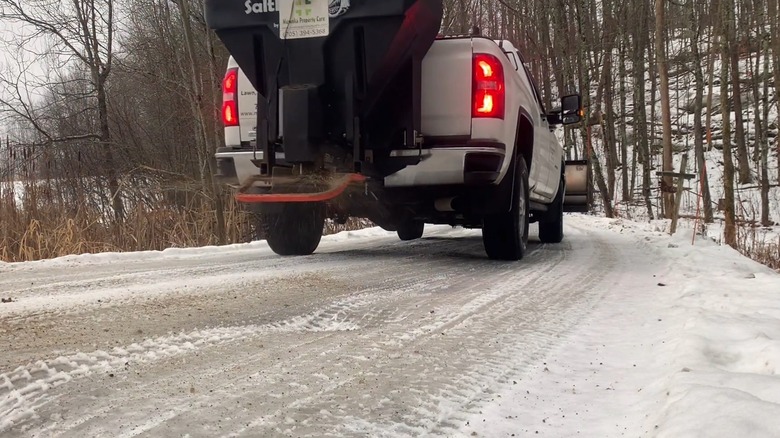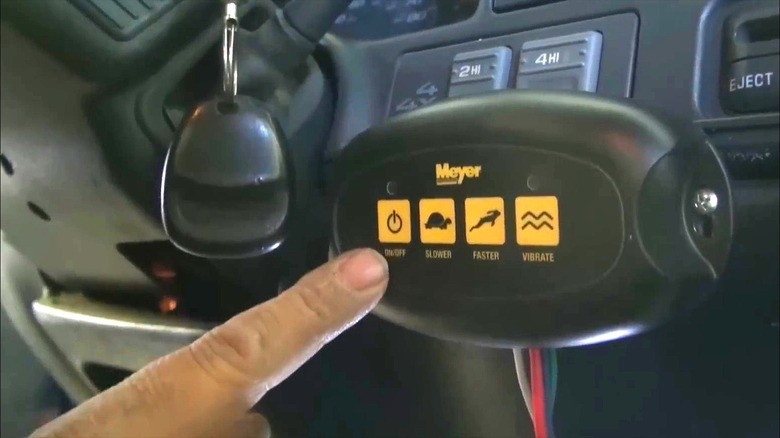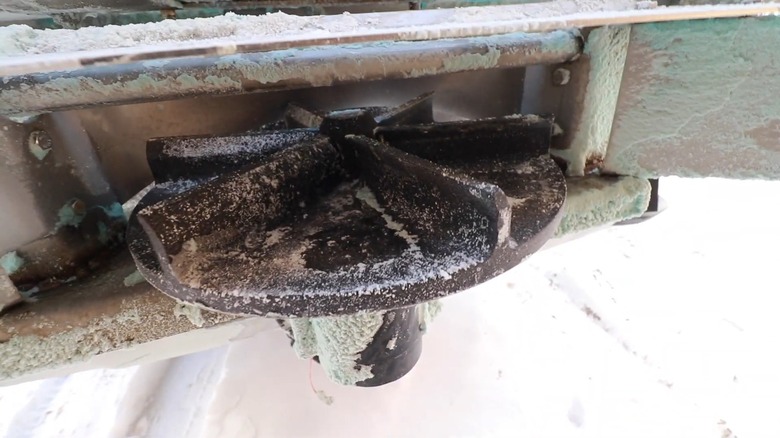How To Use & Maintain The Tailgate Salt Spreader On Your Truck
We may receive a commission on purchases made from links.
No matter what your age, a fresh snowfall means winter fun like sledding, skiing, and snowball fights, can all become a reality. However, on a dour note, Jack Frost also makes the roads slicker. Not only do 70% of US roads stretch across areas that receive snowfall but almost 76,000 motorists are injured every year while snowflakes or sleet are coming down, per the US Department of Transportation. Fortunately, methods like salting the roads help to reduce the likelihood of vehicles slipping and sliding as people travel the streets and highways following a winter weather event. Although some argue there are reasons why road salt for winter ice is a terrible idea, which is why some areas utilize sand instead.
There are salt spreaders you can walk behind, which are ideal for sidewalks and driveways but wouldn't make sense for vast expanses of parking lots or agricultural fields. The perfect tool for these larger jobs is something called a tailgate salt spreader, which can attach to vehicles like pickups, farm equipment, side-by-sides and utility quads. These tools work by using a spinning disc beneath a large hopper that churns and disperses salt in a wide, uniform pattern, creating an even distribution of material as you drive forward. But, if you're going to be out in the elements, remember to consider these winter driving tips to keep you safe while you travel in inclement weather.
What's involved with a tailgate salt spreader installation and how do you operate it?
In terms of installation, these products are made to utilize your truck's tow hitch. After mounting the hitch plate to the spreader, you slide the hitch plug over the pickup's receiver hitch and secure it with a hitch pin. However, the installation gets more involved with regard to power. After all, energy is needed for the motor to spin the impeller disc and disperse the salt.
You'll need to run power cables from the spreader to the truck battery and from the engine compartment into the cab for the controller. Remember to secure the wiring with zip ties away from sources of heat, like the exhaust system, and attach a grounding wire directly to the frame. If this process sounds a bit too intensive, you can always hire professional installers to handle the process for you.
Once installation is complete, the control unit, which can be mounted to your dashboard for convenience, features straightforward controls such as on/off and different speed settings, depending on the model you've selected. Simply open the top of the hopper on the spreader and fill it with rock salt or other appropriate de-icing material, then activate the unit using the controller. As you drive your truck, the spreader will treat the surface, making a tailgate salt spreader an excellent accessory to get your truck winter-ready.
What about regular upkeep?
Proper care is important for any tool in your arsenal, and a tailgate salt spreader is no exception. De-icing material like rock salt is effective at melting ice because it's able to reduce the point at which water freezes. The problem, however, is that the salt and water mixture that's created is hard on many surfaces and can accelerate corrosion, even on the salt spreader itself. Therefore, it's crucial to always empty out any remaining rock salt from the hopper and rinse it before storing it.
Speaking of corrosion, you should routinely check the power contacts of the spreader motor to identify any development of corrosive material. Products like the OriGlam 3pcs Mini Wire Brush Set work well to clean off gunk around the motor housing, which could negatively impact performance.
Lastly, you'll also want to pay special attention to the spinning disc that disperses the salt, as it can become clogged if neglected. After all, if this part isn't functioning properly, you might end up having to re-salt an entire area if the spinner isn't rotating, for example.


